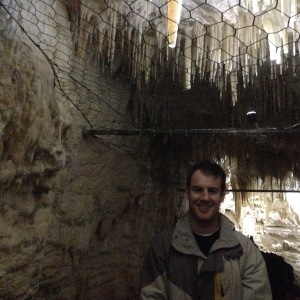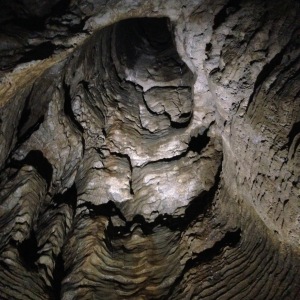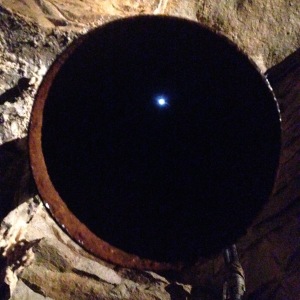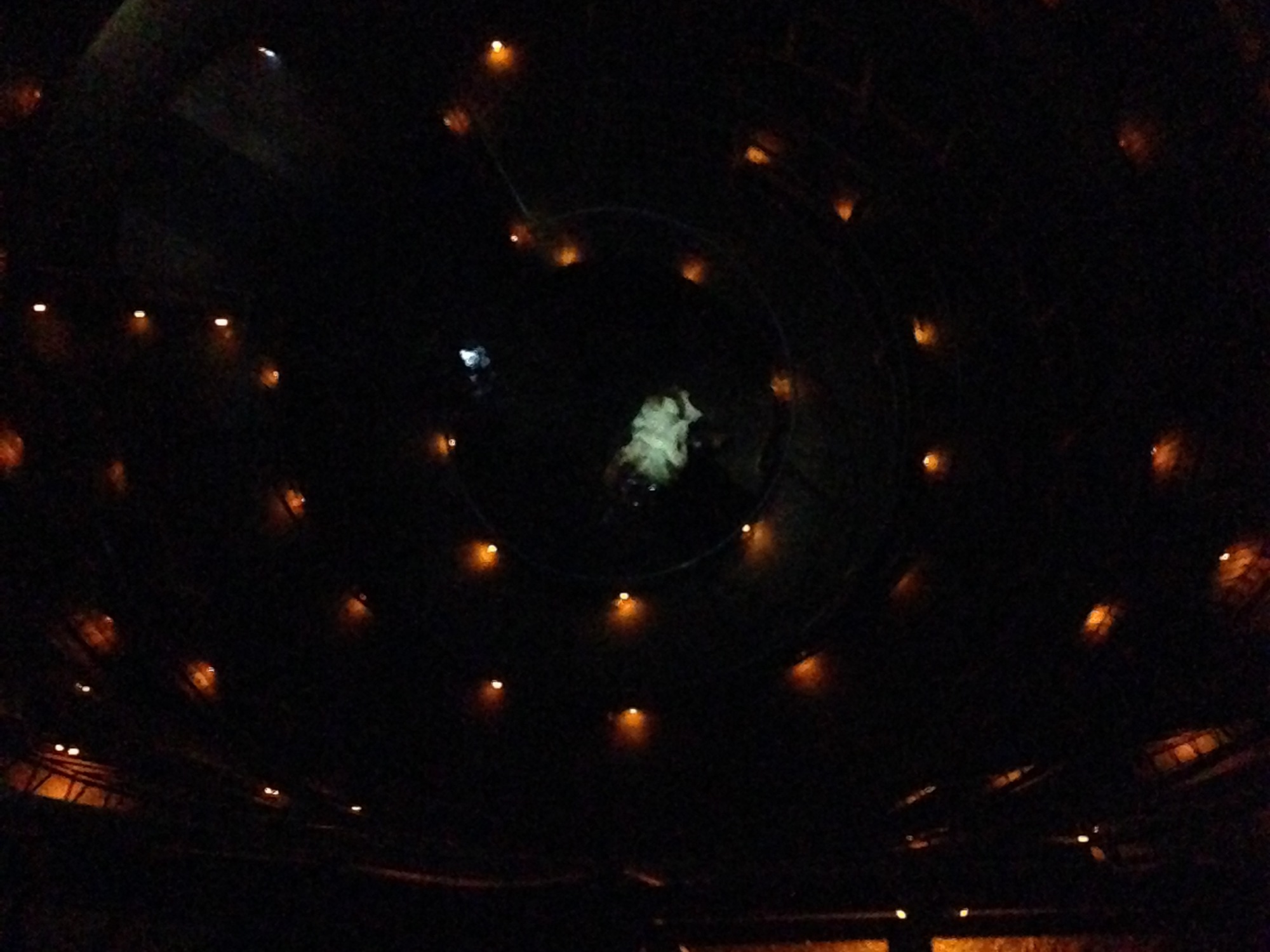- Buying a house is doable, just look at your friends
- You will need a 20% deposit
- Your KiwiSaver can act like a nest egg for your deposit
- There is a first home buyer grant through Housing New Zealand and Kiwisaver
- Being familiar with what is involved will make it easier for when the time comes to buy
- Understanding what is needed allows you to goal set
I can’t help but feel in my current situation as a second year YoPro, renting for the third time and with more of my friends entering the property market, that the prospect of owning a home is much like standing at the top of the 26m high staircase entering Ruakuri cave, looking down into a Big Dark Hole; an all absorbing though mildly claustrophobic experience of great unknown.
Waitomo Caves is about 65 kilom etres from Cambridge and the day before my 27th birthday this year my girlfriend, Alex, took me down to explore three of their caves: Ruakuri, Aranui and the Glow Worm Cave. The caves formations are shaped by water over many years. Understanding the power of water and the ability it has to shape stone reminds us that great things happen over time. In the case of a stalactite, time is measured in centimetres; 1cm of growth per century!
etres from Cambridge and the day before my 27th birthday this year my girlfriend, Alex, took me down to explore three of their caves: Ruakuri, Aranui and the Glow Worm Cave. The caves formations are shaped by water over many years. Understanding the power of water and the ability it has to shape stone reminds us that great things happen over time. In the case of a stalactite, time is measured in centimetres; 1cm of growth per century!
When my parents bought their first home in Invercargill back in the early 80s it cost $30,000 with a deposit of $6,000. Interest rates went as high as 18% in 1987. In a discussion last week chatting with my parents we tried to put it into perspective using the following math. Multiplying the cost of the house by 10 to closely match the cost of a 2 bedroom house and salaries by 10 didn’t quite work as this would be great money today. I then thought about looking at the percentage of income vs the cost of the deposit. For my parents it was a portion of their yearly income, whereas today a deposit on a $300,000 home (rather modest) would be a large wedge of my yearly salary. Realistically, for myself to get a deposit, I would be looking at over the value of my yearly salary. So as the saying goes, “it’s like comparing apples with oranges” and therefore just really shouldn’t be thought about. The property market today is a different beast and feeling bad about this fact will get you nowhere; your efforts are better used finding strategies to overcome this somewhat daunting challenge and approach it with a “getting on with the job” attitude.
.

Like the Waitomo caves, the best way to understand how to get into the property market is probably to just go ahead and explore. Each part of the caves you enter is left in darkness, then by the flick of a switch, (by your caving guide) the large cathedrals you are in are lit up to show all their glory. This is much like the property market. When looking at your bank balance vs what is required just to get a deposit, it is like a dark, absorbing hole with little direction, even the simplest chat with your parents, friends or your bank, will turn on some lights and help you see what needs to be done and what is involved.


It is pretty much common knowledge that post global financial crisis, one needs to have at least 20% deposit to have their home loan approved in New Zealand. To put the Governments KiwiSaver first home buyer scheme into a nutshell, those who have been in the scheme for 5 years can get up to $5,000 to buy a home and up to $10,000 to build a home as long as the cost of the house is under a certain price bracket (in Cambridge its less than $350K, Hamilton is less than $400k and Auckland less than $500K. You can check out your area’s allocation here). If you are working together as a couple, this can get you up to $10,000 towards buying a home and up to $20,000 towards building a home, as long as your combined income is below $120,000 per year.
I am a firm believer in the Kiwisaver scheme at this point in my life. I am no way experienced enough to comment on financial advice, after all the only actual business education I have been through was NCEA level 2 accounting and that required some intense tutoring just to get a pass. I digress, in my first year of working I set my contributions at the maximum 8% and developed a small nest egg without ever knowing what it was like to have that money in my account. I have my KiwiSaver set on the growth scheme which, while slightly more risky, should allow for greater maturity of my fund (I must say it has gone rather stagnant since the China crash and Dairy price drop of the last couple of months). I moved into this fund while still at University with the mentality that I might as well get the maximum output from this small fund which I treat much like a tax. Also, as I currently don’t have any children or property and it is a long term investment, the small variations in this fund are less meaningful over the life of the fund.
Lastly, it is possible to offset the amount of deposit required against an existing property; a few people I have talked with have done this against their parents property. When discussing how this works with my bank they informed me the owner of the property guarantees an amount against their property allowing you to have a lower amount for your deposit. Basically, the property owner makes up the difference for your deposit so that you are able to borrow at a higher value. The amount that is guaranteed is then sorted out between yourselves.
 This final photo is taken within one of the deepest points in the Ruakuri cave looking up a service pipe. When making the paths that line the cave, two teams worked from either end meeting in the middle to complete the path; the first team started at the staircase heading this post and the other came through a river into the depths of the cave and worked their way out.
This final photo is taken within one of the deepest points in the Ruakuri cave looking up a service pipe. When making the paths that line the cave, two teams worked from either end meeting in the middle to complete the path; the first team started at the staircase heading this post and the other came through a river into the depths of the cave and worked their way out.
This pipe was installed initially to deliver cement to the inner portion of the cave so that it didn’t get wet (caves are extremely damp). Following this food was lowered down the pipe to feed the workers. The workers also attempted to drop the hand rails down the pipe, however it resulted in them being buried 6 m into the silt floor of the cave and was not a repeated practice. The light at the end of said pipe is 56 m away and fits perfectly with the cliche that there is light at the end of the tunnel.
My girlfriend and I hope to make it onto the property ladder in the next two years. Before the day we make a SOLD sticker appear on a real estate sign, we have a few steps to take. Firstly, we need to begin saving together. We have started talking with people about buying a house and it is recommended we a) pracitce putting a low offer in on homes and b) learn how to fill out forms related to purchasing property. My parents are in the process of buying another home and talking it over with them, as well as going to open homes with them has turned on some lights as to how the property game works. Alex and I have started looking on TradeMe at what is around and plan on visiting open homes within our expected price range to start to get a feel for what is in store. We are looking at attending a first home buyers evening at my bank which involves talks from home-loan managers, lawyers and real-estate agents. Chatting with property developers and real estate agents as well as friends who have bought their own homes has helped to educate us on the ins and outs. Mortgage brokers and courses like Property Apprentice can also be of benefit.


Love your work Ryan, if you need any help with the finance side of things give me a shout!
LikeLike
Didn’t realize you are an Optom! My wife is as well, great profession to be in
LikeLike
I wondered if that was what her outback work was! Possible plan for myself in a few years!
LikeLike